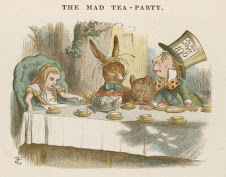At
CAIVN, Bob Morris of
Polizeros takes a look at the latest third party registration numbers in California. He writes:
Let's look at the numbers and see what they tell us. All data is the most recent from the California Secretary of State. Percentage of registered voters in California as of Oct 18, 2010. (Third parties also have number of registered voters.)
- Democrat 44.08%
- Republican 31.02%
- Decline to State 20.25%
- American Independent 2.39% (413,032)
- Green 0.66% (113,835)
- Libertarian 0.53% (91,111)
- Peace and Freedom 0.33% (57,776)
- Other 0.74%
To qualify as a third party, either an affidavit of registration must be completed by 1% of the votes cast in the most recent governor's race or a petition signed by 10%. Currently, 1% is equal to 103, 024.
To maintain ballot status, a party must keep registration at all times equal to one-fifteenth of one percent of total registration, and either: 1) Maintain a registration level equal to at least one percent of the entire vote of the state at the most recent gubernatorial election or 2) poll at least 2% in any of the most recent elections for Governor, Lieutenant Governor, Secretary of State, Controller, Treasurer, Attorney General, Insurance Commissioner, or United States Senator.
Based on these criteria, all four third parties retained ballot status in the 2010 election. . . . all four third parties retained ballot status in the 2010 election . . .
With the introduction of the "top two" primary system in California, it will likely be much more difficult for third parties to retain ballot access in the state. If no third party candidates are among the top-two vote-getters in the primary races for the eight offices listed above, they will be excluded from the general election, and if you are excluded from the general election, you cannot maintain ballot access by polling 2% in those races. Only the American Independent Party and the Green Party have high enough registration numbers to maintain their ballot access by the first criterion, though the Libertarian Party is quite close to the cut-off – if I'm reading the numbers correctly, that is. Bob continues:
with the exception of Peace and Freedom in L.A. County, and contrary to what might be expected, the highest registrations for third parties are in northern, rural, agricultural counties. These counties tend to be conservative, and have very low registration for Peace and Freedom, the only socialist party with ballot status. The three counties where the Green Party is highest could perhaps also be safely described as marijuana-friendly.
It would be interesting to see where decline-to-state voters are clustered in California, since that is where the most movement among the electorate is. Over the last ten years, decline-to-state voters have gone from being 13% of the electorate to 20% of the state's electorate, while all explicit affiliations have either noticeably sunk or remained flat.







No comments:
Post a Comment